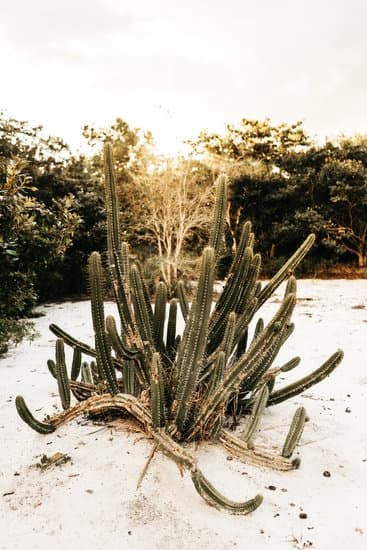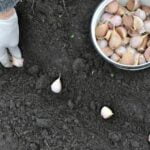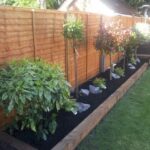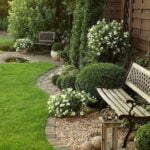Are you looking to start your very own herb garden? Herb garden design layouts are essential when it comes to creating a functional and visually appealing space for growing herbs. Whether you’re a novice or experienced gardener, understanding the layout options available will help you make the most of your herb garden.
Herb gardening involves growing herbs for culinary, medicinal, and aromatic purposes. The benefits of having your own herb garden are numerous, from having access to fresh, flavorful ingredients for cooking to enjoying the therapeutic effects of aromatherapy. To maximize these benefits, it’s important to consider the design and layout of your herb garden.
When it comes to herb garden design layouts, there are several factors to consider, including sunlight exposure, soil quality, and water accessibility. These factors will determine the success of your herb garden and influence the types of herbs you can grow. In this article, we’ll explore different types of herb garden designs and provide tips on choosing the right location for your herb garden based on these considerations.
Choosing the Right Location for Your Herb Garden
When it comes to choosing the right location for your herb garden, there are a few key factors to consider in order to ensure the success of your plants. Here are some tips to help you select the best spot for your herb garden:
– **Sunlight**: Herbs generally require plenty of sunlight to thrive, so it’s important to choose a location that receives at least 6-8 hours of direct sunlight per day. Consider areas in your yard or balcony that are not shaded by buildings or trees.
– **Soil**: Good soil drainage is essential for growing healthy herbs, so be sure to choose a location with well-draining soil. If your soil is heavy or clay-based, consider creating raised beds or using containers filled with quality potting mix.
– **Water**: While it’s important for herbs to receive adequate water, it’s also crucial that the area you choose for your garden does not become waterlogged. Be mindful of natural drainage patterns and avoid areas that are prone to flooding.
Keep in mind that these considerations apply whether you’re planning an outdoor herb garden or an indoor one. With a little bit of planning, you can create the perfect environment for your herbs to thrive and provide you with a bountiful harvest throughout the growing season.
Types of Herb Garden Design Layouts
When planning an herb garden, it’s crucial to consider the layout that will work best for your space and needs. There are various types of herb garden design layouts to choose from, each offering its own unique benefits and visual appeal. From traditional designs to modern and creative options, the possibilities are endless when it comes to creating a beautiful and functional herb garden.
Traditional Herb Garden Design Layouts
Traditional herb gardens often follow a formal or informal design style. Formal herb gardens feature geometric shapes and patterns, often with defined pathways and borders. These layouts are meticulously organized and offer a classic and elegant look. On the other hand, informal herb gardens have a more relaxed and natural appearance, often resembling a cottage garden with winding paths and a mix of different herbs growing together.
Container gardens are another traditional layout option for herb gardening. These compact gardens are ideal for small spaces or for those who want to grow herbs on a patio or balcony. Container gardens can be as simple as planting herbs in individual pots or as elaborate as creating a tiered arrangement with various types of containers.
Modern and Creative Herb Garden Designs
For those looking to add a contemporary touch to their herb garden, there are several modern and creative design options to consider. Vertical gardens, for example, make use of vertical space by growing herbs on walls or trellises. This is an excellent solution for small yards or urban environments where ground space is limited.
Themed gardens are also gaining popularity as a creative approach to herb garden design. These gardens focus on specific themes such as color schemes, culinary uses, medicinal purposes, or fragrances. For instance, you could create an Italian-inspired herb garden featuring herbs commonly used in Italian cuisine like basil, oregano, and rosemary.
No matter which type of layout you choose for your herb garden, the key is to create a functional and visually appealing space that complements your home and lifestyle. By exploring different design options and considering factors such as accessibility, maintenance, and aesthetics, you can create the perfect herb garden that suits your preferences.
Planning Your Herb Garden
When planning your herb garden, it is essential to take into consideration several factors that will contribute to the success and functionality of your garden. One important factor to consider is accessibility. Placing taller herbs at the back of the garden and shorter ones in front makes for easier access during care and harvesting. Additionally, considering maintenance is crucial. Creating a layout that allows for easy watering, pruning, and weeding will save time and effort in the long run.
Another important aspect of planning your herb garden is aesthetics. While functionality is key, an aesthetically pleasing layout can further enhance the beauty of your space. This can be achieved by adding decorative features such as borders, pathways, and even incorporating elements like small statues or decorative rocks.
Incorporating various types of herbs also plays a significant role in planning your herb garden. Understanding the growth habits of different herbs and their compatibility with one another is essential to ensure healthy growth. Some herbs thrive in close quarters with others, while some need more space for their roots to spread out.
| Factor | Consideration |
|---|---|
| Accessibility | Placement of taller and shorter herbs |
| Maintenance | Easy watering, pruning, and weeding |
| Aesthetics | Incorporating decorative features |
| Herb Varieties | Growth habits and compatibility with each other |
Essential Herbs for Your Garden
When planning your herb garden, it’s important to consider what types of herbs you want to include. Whether you’re a beginner or an experienced gardener, there are certain essential herbs that can be useful for a variety of purposes. Here are some popular and easy-to-grow herbs that you may want to consider for your own garden:
- Basil: This aromatic herb is a staple in many kitchens and is commonly used in Italian cuisine. It prefers warm, sunny conditions and well-drained soil.
- Rosemary: Known for its distinctive fragrance and flavor, rosemary is a hardy perennial herb that is perfect for adding flavor to roasted meats and vegetables. It thrives in full sun and well-drained soil.
- Mint: With its refreshing and invigorating scent, mint is a versatile herb that can be used in both culinary and medicinal applications. It grows best in moist soil and partial shade.
In addition to these essential herbs, there are many others that you may want to consider for your garden based on your personal preferences and intended use. Some other popular options include thyme, parsley, cilantro, oregano, and chives.
When caring for these herbs, it’s important to provide them with the appropriate growing conditions, including sunlight, water, and soil quality. By selecting the right combination of essential herbs for your garden and providing them with proper care, you can create a thriving herb garden that will provide you with fresh flavors and aromas throughout the year.
Companion Planting in Herb Gardens
Companion planting is the practice of growing different plants together to achieve specific benefits. This technique has been used for centuries and is a great way to maximize space, increase yield, and naturally control pests in herb gardens. When it comes to herb gardening, companion planting is particularly beneficial as certain herbs complement each other and can be planted together for mutual enhancement.
A classic example of companion planting in herb gardens is pairing basil with tomatoes. Basil repels mosquitoes and flies, while also enhancing the flavor of tomatoes when planted nearby. Another favorable combination is planting rosemary with sage and thyme as they are all drought-tolerant and have similar soil needs. Companion planting also extends to using herbs to repel pests from other plants. For instance, planting mint near cabbage can deter pests like cabbage moths.
In addition to pest control and enhancing growth, some combinations improve the flavor of herbs grown together. For instance, growing chives next to carrots improves both their growth and flavor. These mutually beneficial pairings help create a balanced ecosystem within an herb garden and contribute to a more bountiful harvest.
| Benefit of Companion Planting | Example |
|---|---|
| Pest control | Basil with tomatoes |
| Flavor enhancement | Chives with carrots |
| Drought tolerance | Rosemary, sage, thyme |
Maintaining and Harvesting Your Herb Garden
Basics of Herb Garden Maintenance
Maintaining a healthy and thriving herb garden requires regular care and attention. This includes proper watering, pruning, and fertilizing. Watering is crucial for herb gardens, as most herbs prefer well-drained soil but also need consistent moisture.
It’s important to monitor the soil to ensure it doesn’t become too dry or waterlogged. Pruning is essential for keeping herbs productive and to prevent them from becoming leggy or overcrowded. Fertilizing can also help promote healthy growth, but be cautious not to over-fertilize as this can affect the flavor of your herbs.
Harvesting Herbs for Culinary and Medicinal Use
Knowing when and how to harvest your herbs is key to getting the best flavor and potency from your plants. Most herbs are at their peak flavor just before they start flowering, so it’s best to harvest them in the morning before the sun has warmed them up. When harvesting, use clean, sharp scissors or shears to avoid damaging the plants.
For culinary herbs, pick only what you need at a time, as fresh herbs have a short shelf life once harvested. For medicinal purposes, timing plays an important role as some herbs are best harvested when certain compounds are at their highest concentration.
Preserving Herbs for Future Use
For many herb gardeners, preserving the harvest allows them to enjoy their fresh herbs all year round. There are several methods of preserving herbs including air-drying, freezing, or using them to infuse oils or vinegars. Air-drying works well for robust herbs such as sage or rosemary, while delicate leafy herbs like basil or cilantro do better with freezing.
Infusing oils or vinegar with aromatic herbs like thyme or lavender provides versatile ingredients that can elevate any dish. Properly preserved herbs will retain much of their flavor and fragrance for future use.
By mastering these essential maintenance and harvesting practices in your herb garden, you can ensure a bountiful supply of fresh flavors in your kitchen year-round.
Designing a Unique Herb Garden Layout
In conclusion, designing a unique herb garden layout can be an exciting and rewarding endeavor for both novice and experienced gardeners. By incorporating creative elements such as pathways, borders, and decorative features, you can elevate your herb garden from a functional space to a visually stunning one. Additionally, the use of unique layouts like vertical gardens or themed designs can add an extra level of interest to your herb garden.
It is important to remember that planning and organization are key components in creating a functional and aesthetically pleasing herb garden layout. Consider factors such as accessibility, maintenance, and overall aesthetics when deciding on the design of your herb garden. By paying attention to these details, you can ensure that your herb garden not only looks beautiful but also remains practical and easy to care for.
Ultimately, the design of your herb garden is a reflection of your personal style and preferences. Whether you prefer a traditional formal layout or want to experiment with modern and creative designs, the possibilities are endless. With careful planning and attention to detail, you can create a unique herb garden layout that not only adds beauty to your outdoor or indoor space but also provides an abundance of fresh herbs for culinary, medicinal, or aromatic purposes.
Frequently Asked Questions
What Is the Best Layout for an Herb Garden?
The best layout for an herb garden depends on factors like the available space, sunlight exposure, and personal preference. Some popular layouts include circular designs, raised beds, or even using containers for a more flexible arrangement.
How Do You Arrange Herbs in a Herb Garden?
When arranging herbs in a garden, it’s important to consider their individual needs for sunlight, water, and soil type. Taller herbs should be placed towards the back or center of the garden to avoid shading shorter ones. Grouping herbs with similar requirements together can make maintenance easier and create a visually appealing garden.
What Herbs Grow Well Together Chart?
There are several combinations of herbs that grow well together due to their complementary characteristics. For example, basil and tomatoes are often planted together as they benefit from each other’s growth.
Similarly, rosemary is known to enhance the flavor of beans and carrots when planted nearby. Consulting a “What Herbs Grow Well Together” chart can help in planning a harmonious herb garden layout.

Welcome to my gardening blog! I am passionate about plants and enjoy sharing my knowledge and experiences with others. In this blog, I will write about everything related to gardening, from tips on how to get started to updates on my own garden projects.





